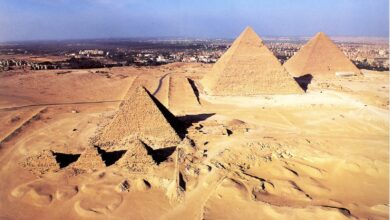Earlier this month, football federation FIFA announced its choice of Qatar as host for the 2022 World Cup championship. The announcement has stirred some environmental concerns given the extreme heat Qatar experiences during the summer months–when the World Cup is held.
The main challenge, apart from the creation of the necessary infrastructure, will be to provide athletes and spectators with a system of climate control able to generate bearable temperatures in order to ensure the event runs smoothly.
Creating such an environment within vast football stadiums will require massive amounts of energy. According to Yasir al-Jamal, Qatar 2022 Technical Bidbook project director, “Qatar 2022 will become the first ever carbon-neutral World Cup.”
In order to achieve this ambitious goal, the 12 stadiums–to be built across the tiny statelet–will be equipped with a combination of two solar energy systems that are already in place but which will work together for the first time at the World Cup.
These stadiums will be covered by photovoltaic arrays to convert sun rays into electricity. “This electricity will be used to power all the systems at the stadiums and training sites, as well as FIFA Fan Fest and FIFA Fan Zones,” al-Jamal explained.
The second system is a solar-thermal one that will use heat from the sun to generate heated water. This heated water will be channeled to tanks for immediate use or be stored for use during evening matches. It will also be channeled into an absorption chiller in which it will be chilled and stored.
The Qatar Bid 2022 official website emphasizes Qatar's environmental commitment to the event. “Our carbon-neutral stadiums are in line with our environmental commitments, and when not in use, their solar cells will generate electricity that will be added to Qatar’s power grid,” it notes.
Qatar’s bid committee has also offered to ship some unneeded stadium components to other countries that lack them. “Qatar has chosen stadia with modular designs so they can be reduced in size after the World Cup to fit local football and community requirements and in some cases transported abroad for permanent use,” explained al-Jamal.
Designed by German architectural firm Albert Speer & Partner GmbH, each and every stadium will display a different and dramatic facade, including Al-Rayan Stadium, surrounded by a membrane-like structure onto which live matches will be projected; Al-Gharafa Stadium, with colored ribbons woven around its structure; and the Al-Ghor Stadium, designed to resemble a giant sea shell.




